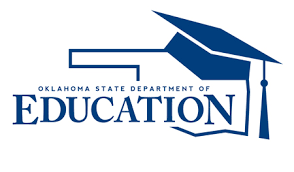State Super Announces $145M in Available Funds
Mike Seals - May 11, 2020 10:45 pm

Hofmeister announces $145 million in coronavirus relief CARES Act funds available to districts, opportunities for additional grants
OKLAHOMA CITY (May 11, 2020) – State Superintendent of Public Instruction Joy Hofmeister announced today that nearly $145 million in emergency federal relief is now available to Oklahoma school districts. Provided in the federal Coronavirus Aid Relief and Economic Security (CARES) Act, the funds are Oklahoma’s portion of the $13 billion Elementary and Secondary School Emergency Relief (ESSER) Fund designated for states after the CARES Act was signed into law in March.
“Like schools across the nation, Oklahoma educators are considering the transition to next school year and preparing for various options that may be brought by the pandemic,” said Hofmeister. “Recognizing the significant learning loss that has resulted from the pandemic, it will be important that districts leverage their ESSER allocations to support students in regaining lost academic ground. We are grateful to Oklahoma’s congressional delegation for their support of the CARES Act.”
Allocations to districts are tied to their proportion of Title I, Part A funds in fiscal year 2020. The Elementary and Secondary Education Act’s Title I, Part A funding is based on the percentage of a school’s eligible student population categorized as low-income, ensuring that federal support reaches the greatest concentration of disadvantaged students. For a list of district ESSER allocations, click here.
To access funds, districts may draw down from their allocation for the following 12 categories of COVID-19-related expenditures:
- Funding activities authorized by the Elementary and Secondary Education Act of 1965, including the IDEA (Individuals with Disabilities Education Act), the Adult Education and Family Literacy Act, the Perkins Act or subtitle B of Title VII of the McKinney-Vento Homeless Assistance Act;
- Coordinating preparedness and response efforts with state, local, tribal and territorial health departments to prevent and prepare a response to the coronavirus;
- Providing principals and other school leaders the resources necessary to address the needs of their individual schools;
- Funding any activity that addresses the delivery of services to at-risk and minority students;
- Developing and implementing procedures to improve school preparedness and response efforts;
- Training and offering professional development for staff on sanitation and minimizing the spread of disease;
- Purchasing cleaning supplies;
- Planning for and coordinating services during long-term closures including providing meals, technology for online learning, guidance for carrying out IDEA services, etc.
- Purchasing educational technology (including hardware, software and connectivity) to conduct online learning for students served by the LEA (local education agency). This may include assistive technology or adaptive equipment for students with disabilities;
- Providing mental health services and supports;
- Planning and implementing activities related to summer learning and supplemental after-school programs during the summer months and providing continued services to at-risk and minority students; and
- Funding other activities necessary to maintain the operation and continuity of services in LEAs and continuing to employ the LEA’s existing staff.
In the coming weeks, districts will have the opportunity to pursue incentive grants established by the Oklahoma State Department of Education (OSDE) funded by a portion of Oklahoma’s set-aside ESSER funds. Districts that commit to spend at least 30% of their ESSER funds in at least two of the following areas deemed priority pursuits by OSDE will be eligible to apply for additional funds:
- Expanding connectivity for students to enable distance learning (i.e., purchasing devices, hot spots, access points, etc.);
- Purchasing content from a statewide contract approved by the OSDE for a Content Management System (CMS) or Learning Management System (LMS);
- Providing mental health supports for students through social and emotional learning tools;
- Providing compensatory services to students identified to be at risk as a result of the closure of school buildings in spring 2020 (i.e., English learners, students with disabilities, students needing credit recovery, etc.); and
- Providing training in the science of reading for teachers in Pre-kindergarten through fifth grade, with a specific focus on delivering instruction remotely.
“We must do everything in our power to ensure that every home in Oklahoma is fully connected so each of our students has the opportunity for academic success in a 21st-century context. That means full connectivity and a device that can accommodate rigorous distance education,” said Hofmeister. “COVID-19 has pulled the curtain back on the digital divide. With an increasing number of schools moving to blended learning environments, the time is now to close this divide so that every student can be positioned for success regardless of whether school takes place inside a building or beyond the schoolhouse walls through digital delivery of content and instruction.”



